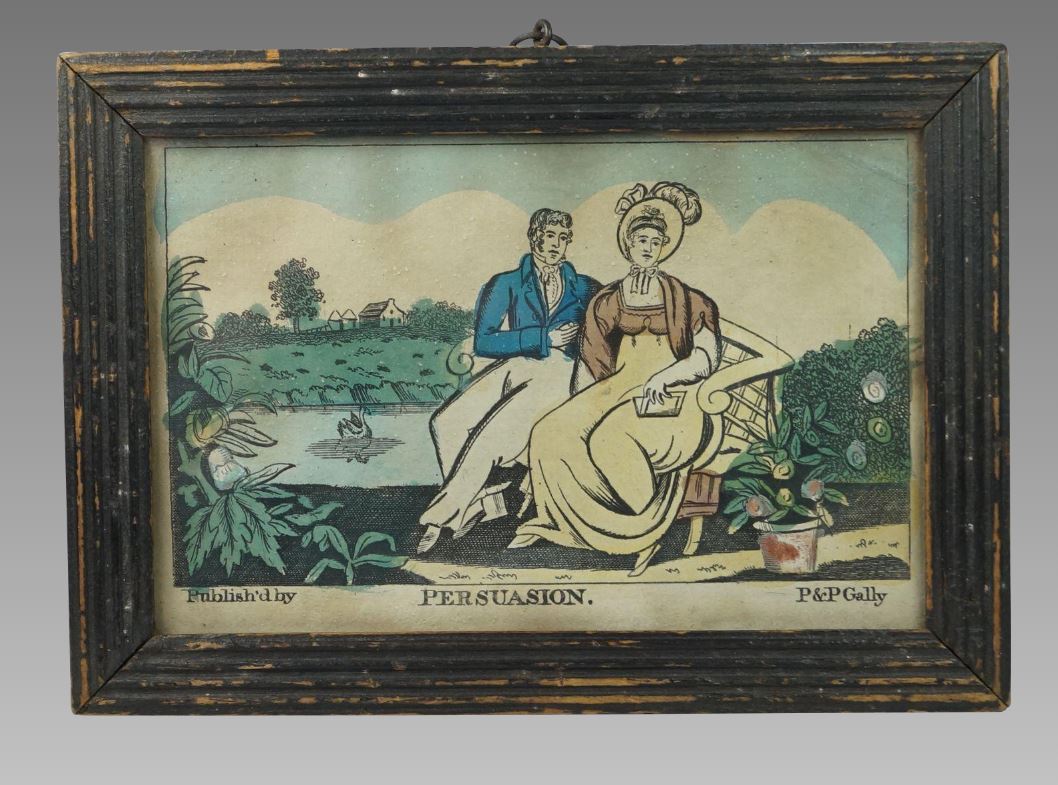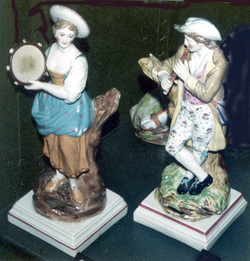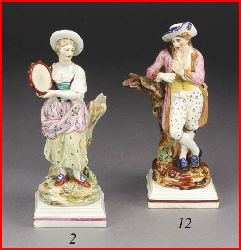Just this week, I came across a far humbler version of the Persuasion print. This one, seen below, is tiny cottage print. Undated, it measures only 7 inches by 4 inches. It was printed on cheap paper and hand-colored quickly and simply, and it is amazing that it has survived. Clearly, the figures are the same, and once again that ambitious flower is alongside the lady.
Perswaition groups are both impressive and beautiful. They have a sizable footprint, a good three-dimensionality. I think that Perswaition groups were made over an extended period of time. Their quality can vary. Some, like those shown here are quite finely potted, but others seem "chunkier." They are found with various bocage forms, and the base sometimes has little feet on it. With all these variations, there is a lot for a collector to choose from....but try to find all the features on your wish list in one figure group!! In my case, I wanted fine quality and just the right expression on the lady's face. That mattered more to me than a title on the base. It took me almost twenty years to acquire the group we own!
Do you know what St. Monday is? "Keeping St. Monday" was said to justify staying away from work in bygone centuries to recover from Sunday's drinking binges. (Remember in those times, days marking particular saints were holidays.) Sunday drinking was a problem in the Potteries of Staffordshire, so I guess that on hang-over-Mondays a few things went wrong....and so we come to the title Perswaition group on Aurea Carter's site, which seems to have been fired and painted on a Monday.
The longer I collect, the more tolerant I am of damage. It is part of life. The Japanese technique of kintsukuroi repairs pottery with lacquer dusted with gold or silver or platinum. The repair is not hidden. Rather, it is highlighted. The philosophy behind this technique is that the imperfection is integral to the piece's history and should be celebrated as such. The thinking is that something that has history becomes even more beautiful when it suffers damage. Alas, when it comes to early English pottery figures, we think quite differently, but perhaps we should also learn to an embrace the damage in our own collections.



























